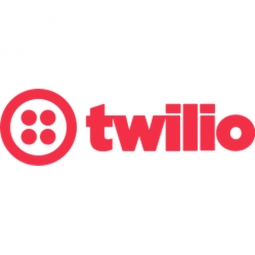Technology Category
- Automation & Control - Human Machine Interface (HMI)
- Infrastructure as a Service (IaaS) - Cloud Databases
Applicable Industries
- Cement
- Telecommunications
Applicable Functions
- Sales & Marketing
Use Cases
- Speech Recognition
- Time Sensitive Networking
Services
- Cloud Planning, Design & Implementation Services
- System Integration
About The Customer
Talkdesk has grown to more than 150 customers since its inception in 2011. The company has seen particular traction among sales and support organizations based on its ability to integrate with a quickly growing list of more than 25 CRMs and other database systems, including Salesforce.com, Desk.com, Zendesk and SugarCRM. When a call comes into a Talkdesk-based call center, agents are automatically presented with customer information, complete with call history. Support reps can then add notes and forward calls to others within the organization or to outside numbers. Talkdesk customers, including brands like Sidecar and Mindvalley, have saved substantial money and time by implementing Talkdesk into their business operations.
The Challenge
Talkdesk, a company co-founded by Tiago Paiva and Cristina Fonseca, was faced with the challenge of developing a complete call center cloud solution. The existing call center solutions in Portugal, where Paiva had personal experience, were expensive and time-consuming to manage. The idea of a cloud-based alternative evolved in his mind, and the opportunity to participate in a Twilio contest gave him a means to make it a reality. The objectives for their service were straightforward: use web browsers as the only user interface, make it simple to set up a call center, make it easy to send and receive calls, support the product in the cloud, and make it affordable. Despite being predisposed to Twilio through the contest and Twilio Fund, the Talkdesk team researched other alternative services.
The Solution
Talkdesk decided to stick with Twilio as it provided all the voice, SIP, and SMS features that they required, had an established infrastructure track record, would scale to match their needs as well as those of their customers, and offered SMS-enabled phone numbers worldwide. Talkdesk's commercial offering met the original requirements and more. Customers use the service on a pay-as-you-go basis and manage it exclusively through their browser. The average setup time for a Talkdesk solution is about one hour. Talkdesk provides the features of hardware-based call centers and more: unlimited concurrent calls, IP phone, intelligent routing, recordings, prioritized queues, IVR, and outbound forwarding. New features on Talkdesk's roadmap include the release of SMS features that are currently in beta, use of SIP and IP phones, addition of MMS, and expansion to more countries using Twilio-powered phone numbers.
Operational Impact
Quantitative Benefit

Case Study missing?
Start adding your own!
Register with your work email and create a new case study profile for your business.
Related Case Studies.

Case Study
System 800xA at Indian Cement Plants
Chettinad Cement recognized that further efficiencies could be achieved in its cement manufacturing process. It looked to investing in comprehensive operational and control technologies to manage and derive productivity and energy efficiency gains from the assets on Line 2, their second plant in India.

Case Study
Vodafone Hosted On AWS
Vodafone found that traffic for the applications peak during the four-month period when the international cricket season is at its height in Australia. During the 2011/2012 cricket season, 700,000 consumers downloaded the Cricket Live Australia application. Vodafone needed to be able to meet customer demand, but didn’t want to invest in additional resources that would be underutilized during cricket’s off-season.

Case Study
SKT, Construction of Smart Office Environment
SK T-Tower is the headquarters of SK Telecom. Inside the building, different types of mobile devices, such as laptops, smartphones and tablets, are in use, and with the increase in WLAN traffic and the use of quality multimedia data, the volume of wireless data sees an explosive growth. Users want limitless Internet access in various places in addition to designated areas.






